
PREV ARTICLE
NEXT ARTICLE
FULL ISSUE
PREV FULL ISSUE
ATTRIBUTING U.S. COINS AT THE BRITISH MUSEUM
Last week we showed images of some additional U.S. coins from the British Museum collection, forwarded by Saul Teichman. We left it as an exercise for readers to attribute their die varieties.
-Editor
 1793 Half Cent
1793 Half Cent
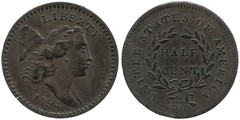 1794 Half Cent
1794 Half Cent
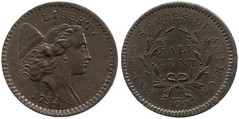 1794 Half Cent
1794 Half Cent
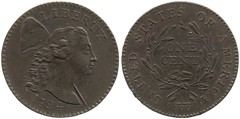 1794 Cent
1794 Cent
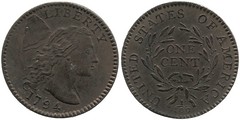 1794 Cent
1794 Cent
Dan Demeo writes: Most were pretty trivial, one not so. The copper coins were easy:
1793 C.2 half cent
Dan's attributions were to Cohen (Half Cents) and Sheldon (Cents).
The last coin was an accidental puzzlement. I was equally unsure about the denomination and wrote to Saul to confirm, but his reply arrived too late for publication. Rather than hazard a guess (I thought it looked like a dollar), I didn't supply a denomination. Let's see how Dan fared.
-Editor

Dan adds: Not being a collector of early silver, I did know that all the early silver coins looked similar, with no denomination as part of the design, being distinguished by size (weight), and the presence of edge lettering on the half and dollar. However, no weight or size reference was present. My trusty Red Book showed only 16 star varieties of 1797 dollars, so not a dollar. Halves, I do have Overton's book, and both varieties appear to have crowded reverses with large letters--not a half. Quarters, easy, they didn't make 1797 quarters. Dimes, I see 16 and 13 star varieties in 1797, no 15 star variety. So it must be a half dime, and they did have a 15 star variety of 1797, but I have no reference for that series. Not bad for having a minimum of expertise and references.
Correct! Saul confirmed that this is indeed a half dime.
-Editor
Bill Eckberg forwarded the article to some half cent collectors. Regarding the 1794 C7, he writes: The owner of the Missouri Cabinet says he compared his coin side-by-side with the BM specimen a number of years ago, and thought his was better by a point or two. He said he likes the two of them because they are the only examples that show the full hair detail of that obverse die. They are the only two UNCs, and the hair is more blunt on the other varieties with that obverse. All who replied agreed that the British Museum coin now looks brown, so the full red Missouri Cabinet example is unquestioned as the finest. To read the earlier E-Sylum article, see: MORE U.S. COINS AT THE BRITISH MUSEUM (www.coinbooks.org/esylum_v16n03a21.html)
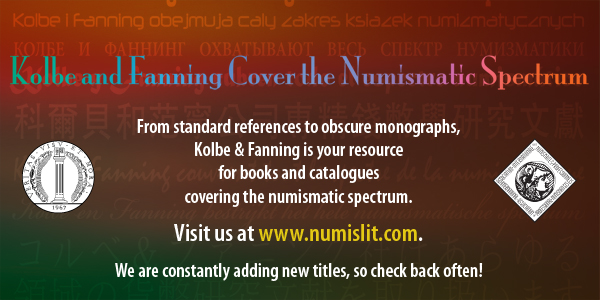
Wayne Homren, Editor The Numismatic Bibliomania Society is a non-profit organization promoting numismatic literature. See our web site at coinbooks.org. To submit items for publication in The E-Sylum, write to the Editor at this address: whomren@gmail.com To subscribe go to: https://my.binhost.com/lists/listinfo/esylum All Rights Reserved. NBS Home Page Contact the NBS webmaster 
|